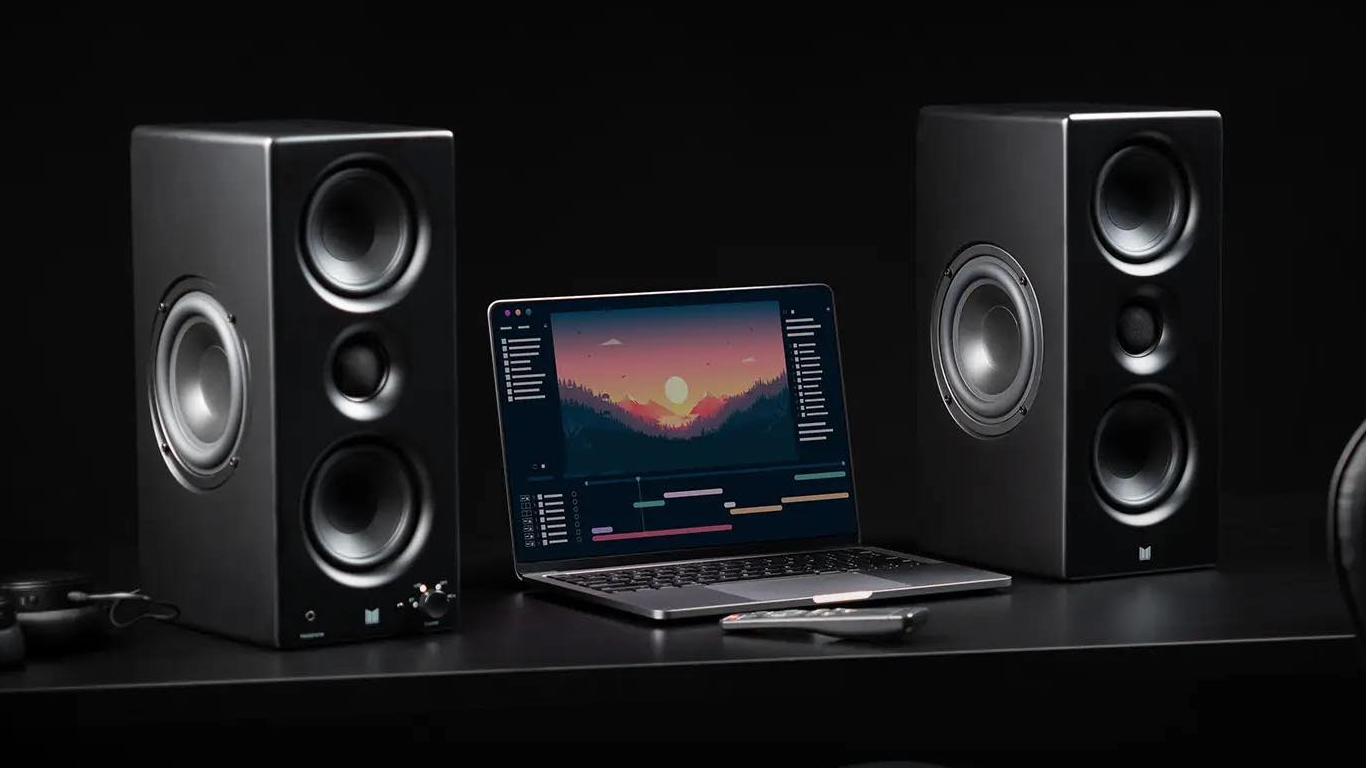Monolith’s huge 100W desktop speakers want to knock you off your office chair
I don’t often get excited about Bluetooth desktop speakers, but when I do, they’re monolithic

If you're reading this on your laptop (even one of the best laptops) or tablet, take a quick glance at the little grilles either side of your keyboard – or on the edge of the screen, firing outwards from your handheld device.
Now, gaze upon the powered speaker pair above, designed specifically for your desktop and each one toting dual four-inch woofers, a one-inch silk dome tweeter, a 5.25-inch passive radiator and 50W of class D amplification, which you're able to toe in (or not – hey, it's your system) to find the ideal listening position. Hardly a contest, is it?
The product is the Monolith MTM 100 and as well as being a powerful 100W proposition, it's a well-connected one too: pair them to your compact smartphone as well as your computer with Bluetooth 5.0 with aptX HD, or hardwire them with a pair of RCAs for analog listening, 3.5mm aux-in, or Toslink optical and USB-C to connect digitally utilizing the onboard high performance DAC.
They also come with a wireless remote and have a connection for a subwoofer too – let's face it, not many of even the best Bluetooth speakers have those…
Opinion: these desktop speakers are not just for work

Having tested some of the best party speakers on the market, the TechRadar team prides itself on knowing the kind of sound quality (and volume) it takes to get a party going in full swing, and this is it – although there's a headphone jack on the front of one speaker if you're a party of one today.
To quickly explain what powered speakers are: each of the the products in our best stereo speakers guide can be categorised into three different species – active, powered, and passive. Passive speakers are the traditional driver-filled boxes that require an external pre/power amp combo to produce sound – but they don't have to be traditional-looking, as my favorite mildly terrifying Wilson Audio speakers prove. What happens is that once the signal from the amp reaches these boxes, an internal crossover within the speakers senses and sends the appropriate frequencies to each of the drivers (tweeter, midrange driver, woofer, etc.)
Active speakers have all of that amplification built in – and crucially, they have one amp unit dedicated for each 'way'. So, a two-way speaker with one tweeter and one mid/bass driver unit has two power amplifier modules, one for each driver (or 'way') fed by an 'active' powered crossover.
Sign up for breaking news, reviews, opinion, top tech deals, and more.
Then, powered speakers – which is what we have here (although another good example is the Q Acoustics M20 HD). Here, the amplifier is still built in, but it is usually squirrelled away into one of the boxes and powers all of the drivers within the system, which means one speaker is assigned as the 'master' and one is the 'slave'.
Powered speakers tend to be a cost-effective option, because you don't have to shell out on extra hi-fi separates (in a passive setup) or extra dedicated amp modules (in active speakers). And even though I have yet to hear them, at just $499.99 (around £440 or AU$795, but we're waiting on official pricing), I think these speakers are worth shouting about.
See, that's $100 cheaper than the Q Acoustics option above, although it should be noted that you are getting 2 x 65W of power there, which I'd argue is a bit much for the average office setup.
My advice? If you're an avid gamer, musician, content creator, or just someone who loves powerful audio at their desk and wants a range of connectivity options, an alternative to even one of the best PC gaming headsets or best computer speakers could be revelatory – and the Monoprice Monolith MTM 100 is well worth a look.

Becky became Audio Editor at TechRadar in 2024, but joined the team in 2022 as Senior Staff Writer, focusing on all things hi-fi. Before this, she spent three years at What Hi-Fi? testing and reviewing everything from wallet-friendly wireless earbuds to huge high-end sound systems. Prior to gaining her MA in Journalism in 2018, Becky freelanced as an arts critic alongside a 22-year career as a professional dancer and aerialist – any love of dance starts with a love of music. Becky has previously contributed to Stuff, FourFourTwo and The Stage. When not writing, she can still be found throwing shapes in a dance studio, these days with varying degrees of success.